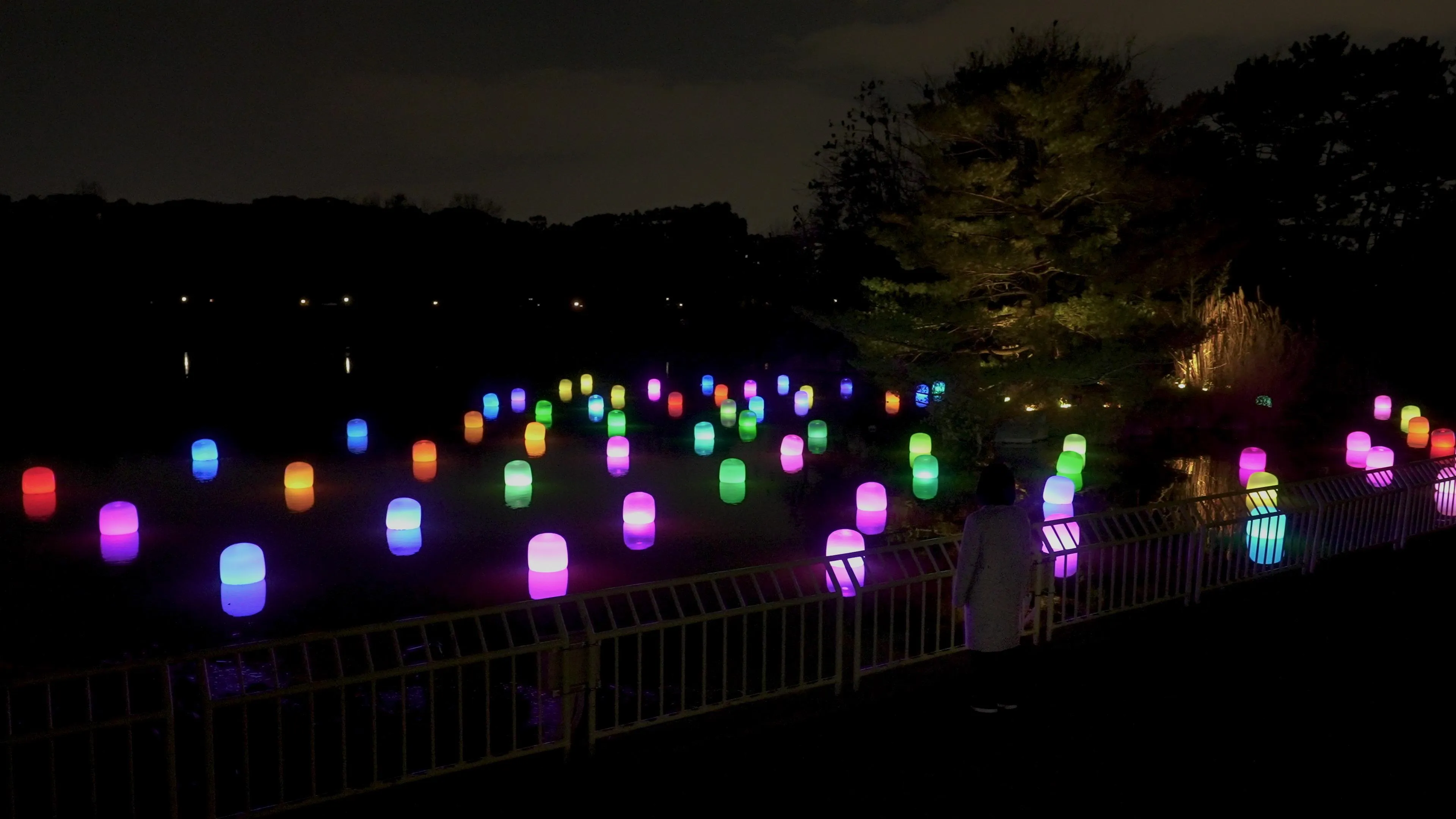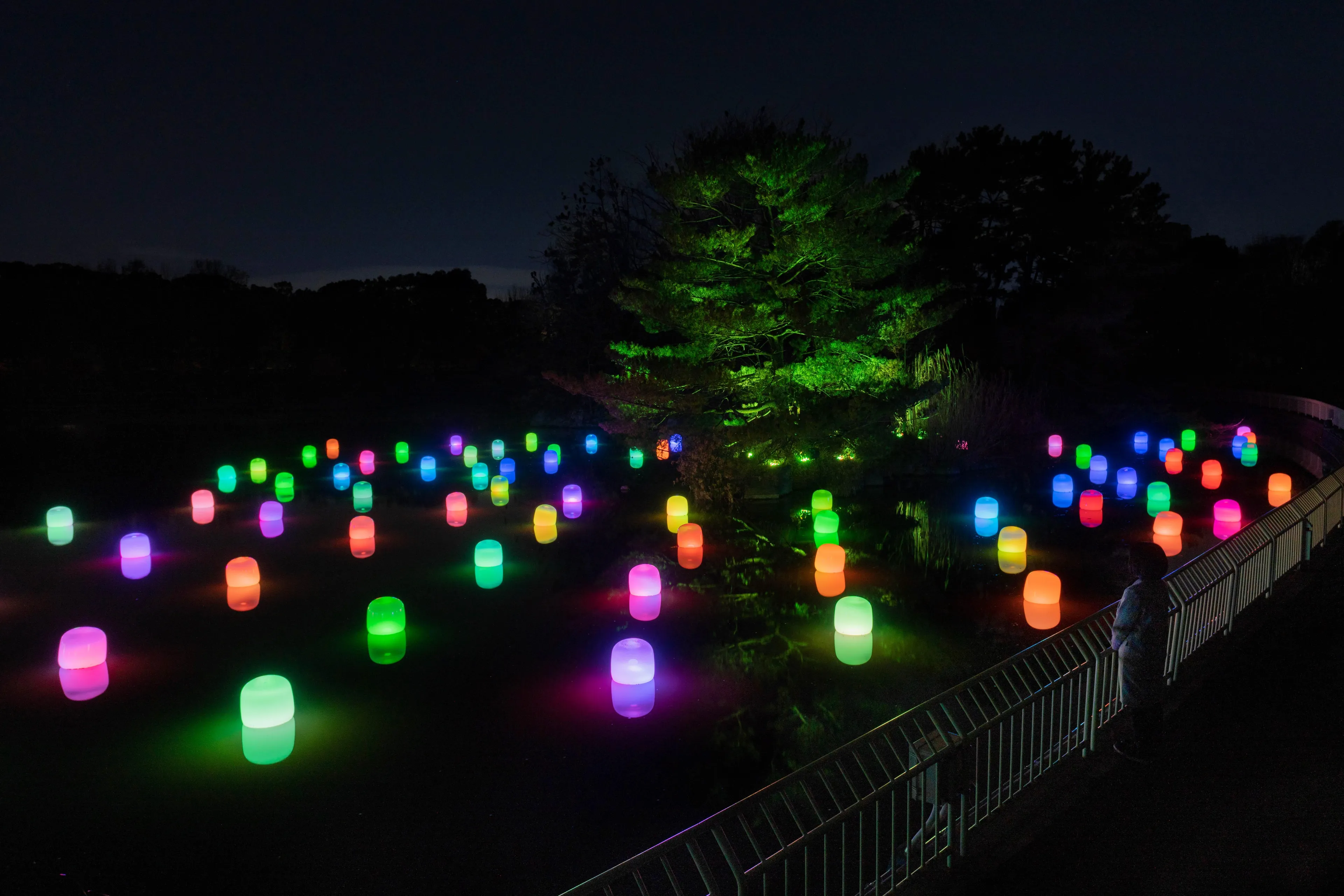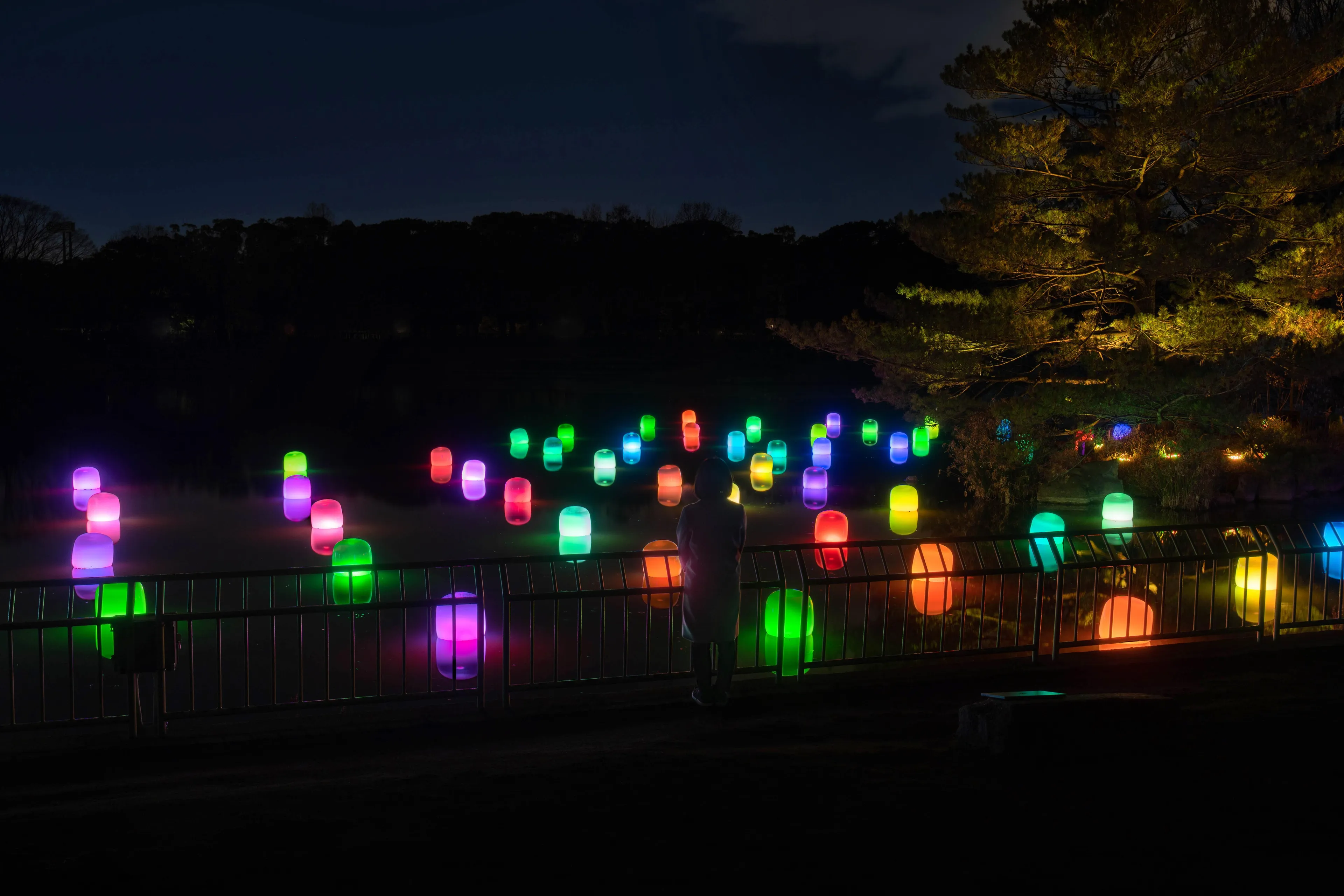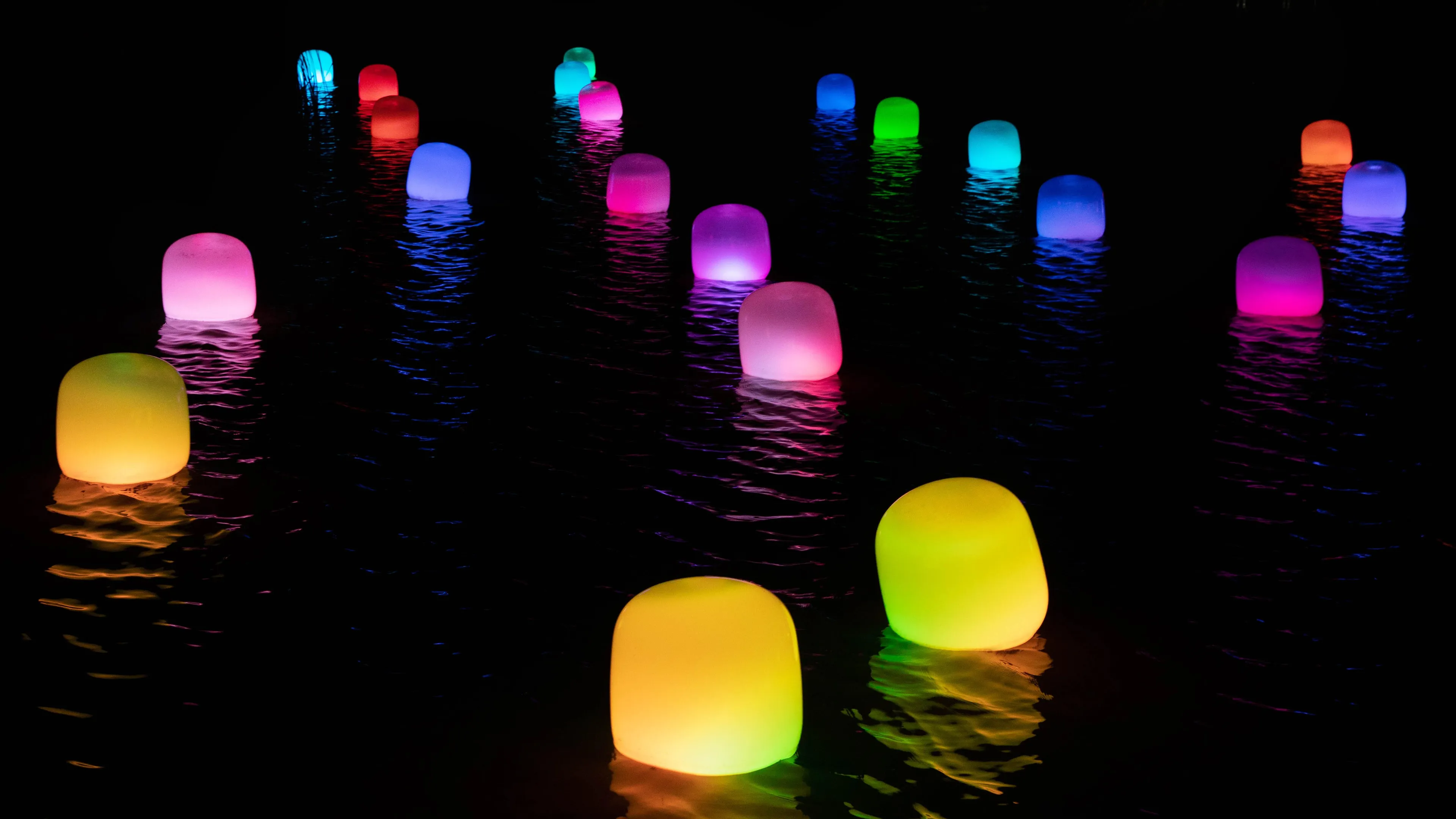Floating Resonating Lamps on Oike Lake - Ambiguous Colors
teamLab, 2022, Interactive Installation, Murano Glass, LED, Endless, Sound: Hideaki Takahashi, Production Support: Hirohito Saito (OryZa Design), Shinya Yoshida (SYD INC.)


Floating Resonating Lamps on Oike Lake - Ambiguous Colors
teamLab, 2022, Interactive Installation, Murano Glass, LED, Endless, Sound: Hideaki Takahashi, Production Support: Hirohito Saito (OryZa Design), Shinya Yoshida (SYD INC.)
Each of the lamps on the Oike Lake’s surface floats autonomously. When a person stands still near a lamp, or when the wind blows a lamp, it changes color as it shines brightly and produces a tone. The light of that lamp spreads to nearby lamps one by one, as they resonate with the same tone, continuing on to the trees on the islet in the center of the lake. If light approaches from the other side it signifies the presence of people there, making people more aware of the existence of others in the same space.
When the wind is not blowing and people are not nearby, the lamps begin to blink slowly.
Before the modern era in Japan, ambiguous colors born from the characteristics of silk were given descriptive names evocative of the four seasons. Such colors were called Kasane no Irome (nuances of layered colors), and were created by the combination of the lining and exterior fabric (silk was thin at the time so the color of the lining showed through the exterior fabric) and gradations from overlapping colors. Since the colors of the lamps are produced by light, the lamps can create ambiguous colors similar to Kasane no Irome, such as light in water, sunlight on water plants, morning glow, morning sky, sky at twilight, peach, plum, iris, and spring maple.
When the wind is not blowing and people are not nearby, the lamps begin to blink slowly.
Before the modern era in Japan, ambiguous colors born from the characteristics of silk were given descriptive names evocative of the four seasons. Such colors were called Kasane no Irome (nuances of layered colors), and were created by the combination of the lining and exterior fabric (silk was thin at the time so the color of the lining showed through the exterior fabric) and gradations from overlapping colors. Since the colors of the lamps are produced by light, the lamps can create ambiguous colors similar to Kasane no Irome, such as light in water, sunlight on water plants, morning glow, morning sky, sky at twilight, peach, plum, iris, and spring maple.


